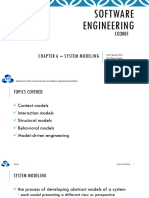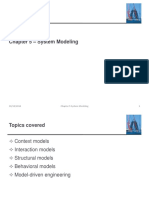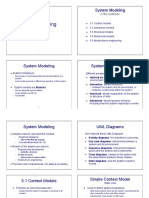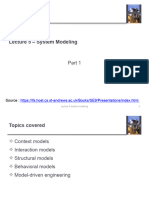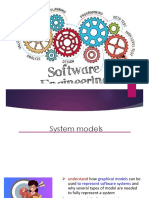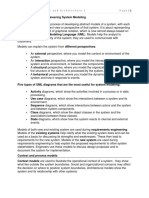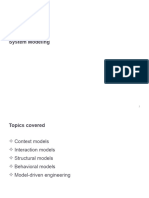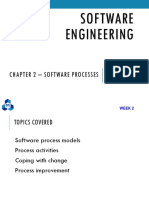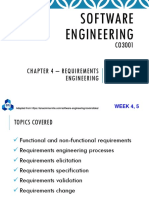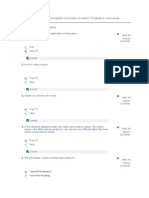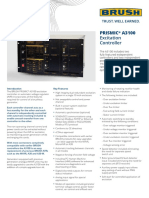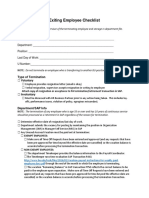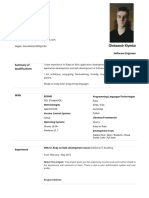0% found this document useful (0 votes)
111 views61 pages05 - Ch5 System Modeling
The document discusses system modeling and provides examples of different types of models, including:
1) Context models which illustrate the operational context and boundaries of a system.
2) Interaction models such as use case diagrams and sequence diagrams which model user and system interactions.
3) An example use case scenario for transferring patient data from a mental healthcare system to an external patient records system.
Uploaded by
Hồ Văn HoàCopyright
© © All Rights Reserved
We take content rights seriously. If you suspect this is your content, claim it here.
Available Formats
Download as PDF, TXT or read online on Scribd
0% found this document useful (0 votes)
111 views61 pages05 - Ch5 System Modeling
The document discusses system modeling and provides examples of different types of models, including:
1) Context models which illustrate the operational context and boundaries of a system.
2) Interaction models such as use case diagrams and sequence diagrams which model user and system interactions.
3) An example use case scenario for transferring patient data from a mental healthcare system to an external patient records system.
Uploaded by
Hồ Văn HoàCopyright
© © All Rights Reserved
We take content rights seriously. If you suspect this is your content, claim it here.
Available Formats
Download as PDF, TXT or read online on Scribd
/ 61



